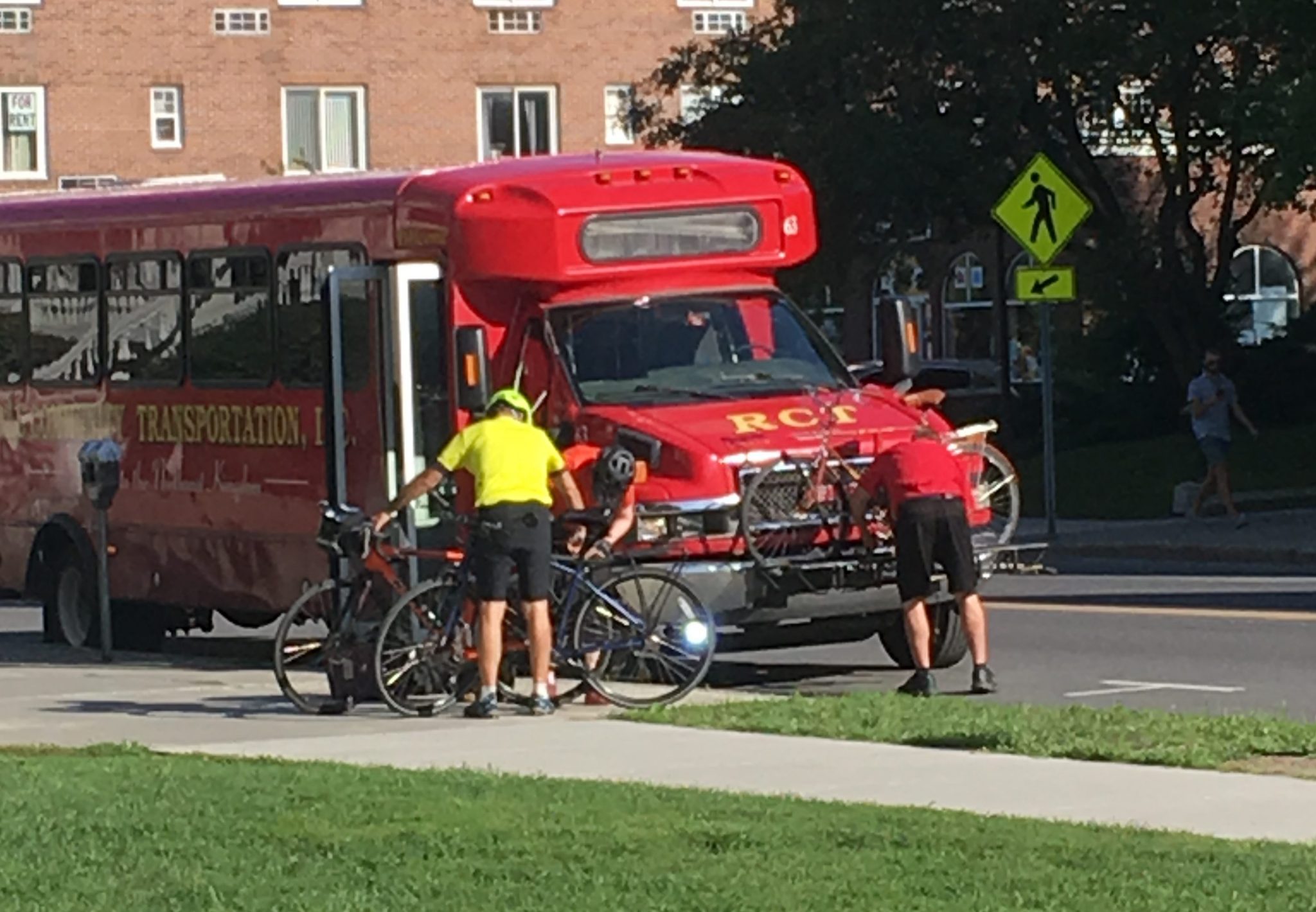Find below the text of Kate McCarthy’s commentary in VTDigger this week.
Winter came early this year, and I suspect I wasn’t the only one in a panic because I forgot (again) to make an appointment to have our car’s snow tires put on. (It wasn’t just me: A friend got to a local business at 5 a.m. to wait in the first-come, first-served queue and get her tires put on just before Thanksgiving.) Oil changes, new tires, windshield washer fluid, parking, clearing snow and ice off the windshield, regular fill-ups … despite their convenience, cars can be inconvenient.
A transportation system that relies almost entirely on one way of getting around can be inconvenient, too. As captured in the recent VPR Brave Little State podcast, people both want and need other options, whether that is because they cannot drive or choose not to. The fact is that many people are left behind by our current transportation system. Layer on to this the fact that transportation accounts for 43% of our greenhouse gas emissions, and it’s clear that we have many good reasons to rethink how we get around.
“But we’re a rural state” is the default response, stopping conversation in its tracks when we try to start talking about transportation choices other than driving our own cars. There is no denying that it is hard to think beyond what we are used to, particularly when so many Vermonters drive every day.
But what if instead, our response was this: Since we are a rural state, what are some ways we might diversify our transportation system across communities of all sizes, while also cutting down on our pollution from transportation? Recognizing that cars aren’t going away, but that people need and want convenient and cleaner ways to get around, what can Vermont do?
Transportation for Vermonters is a diverse coalition of groups working on transportation, environmental, land use, energy, and human services, and we recently released a policy agenda that starts to answer this question. We fully recognize that the transportation system we have took a long time to develop, and will take real commitment and effort to reinvent, but we propose that we get started with a few key actions.
One is supporting the Transportation and Climate Initiative (TCI) – a chance to work with up to 12 other Northeastern and mid-Atlantic states on a region-wide approach to making transportation cleaner and more accessible. TCI is a cap and invest system. Much like the Regional Greenhouse Gas Initiative (RGGI), which Vermont joined under Republican Gov. Jim Douglas and which provided Vermont with funding for weatherization, TCI revenues could provide the infusion of funds we need to ensure that we have more choices than just cars – choices that help us meet diverse mobility needs and reduce our contributions to polluting greenhouse gases.
The parameters of the program were laid out in a draft memorandum of understanding that was released in December. While the program could certainly be more ambitious in several areas, Transportation for Vermonters and many others see it as a step in the right direction that our leaders should take steps to advance.
The revenue generated by TCI could support another key T4VT priority: expanding transit service to better serve all Vermonters. Our rural development pattern and aging population mean that additional investment in transit – along with innovation and modernization – are needed to serve our transportation needs. But to serve everybody, transit must be more than just fixed-route buses: We see it as encompassing the network of choices that links people where they need to go, whether that is shared vehicles (including transportation network companies, like Lyft or Uber), bikes, walking, buses, or even microtransit. With a system that’s nimble enough, this expansion could serve communities of many different sizes.
We also know that when housing, jobs, schools, and services are closer together, as they are in our villages and downtowns, people have more transportation choices, which saves money and reduces greenhouse gas emissions. For those who want to live in our villages and downtowns, we need more quality housing that’s affordable. We’re advocating for greater investments in housing and our smart growth centers, to improve livability, affordability, and transportation choices.
Cleaner vehicles, like electric and hybrid vehicles, are also an essential part of our transportation system, and will play an important part in reducing greenhouse gas emissions in the short term – something we absolutely must do. In the Statehouse, we will be making sure that excess fees aren’t prematurely applied to this emerging and helpful technology.
In Vermont, it is not only that we are accustomed to driving; we often have no other choice. But we shouldn’t have to choose between getting around today and preserving a stable climate for tomorrow. This legislative session, and with the opportunity of the Transportation and Climate Initiative before us, we must think creatively about how to provide convenient, affordable and sustainable transportation options that work for Vermont – while making the whole of our transportation system just a little more convenient.
The members of Transportation for Vermonters are AARP-VT, American Lung Association in Vermont, CarShare Vermont, Chittenden Area Transportation Management Association, Green Mountain Transit, Local Motion, Renewable Energy Vermont, Vermont Chapter of the Sierra Club, Vermont Clean Cities Coalition, Vermont Energy Investment Corporation, the Vermont Natural Resources Council, and the Vermont Public Interest Research Group.





